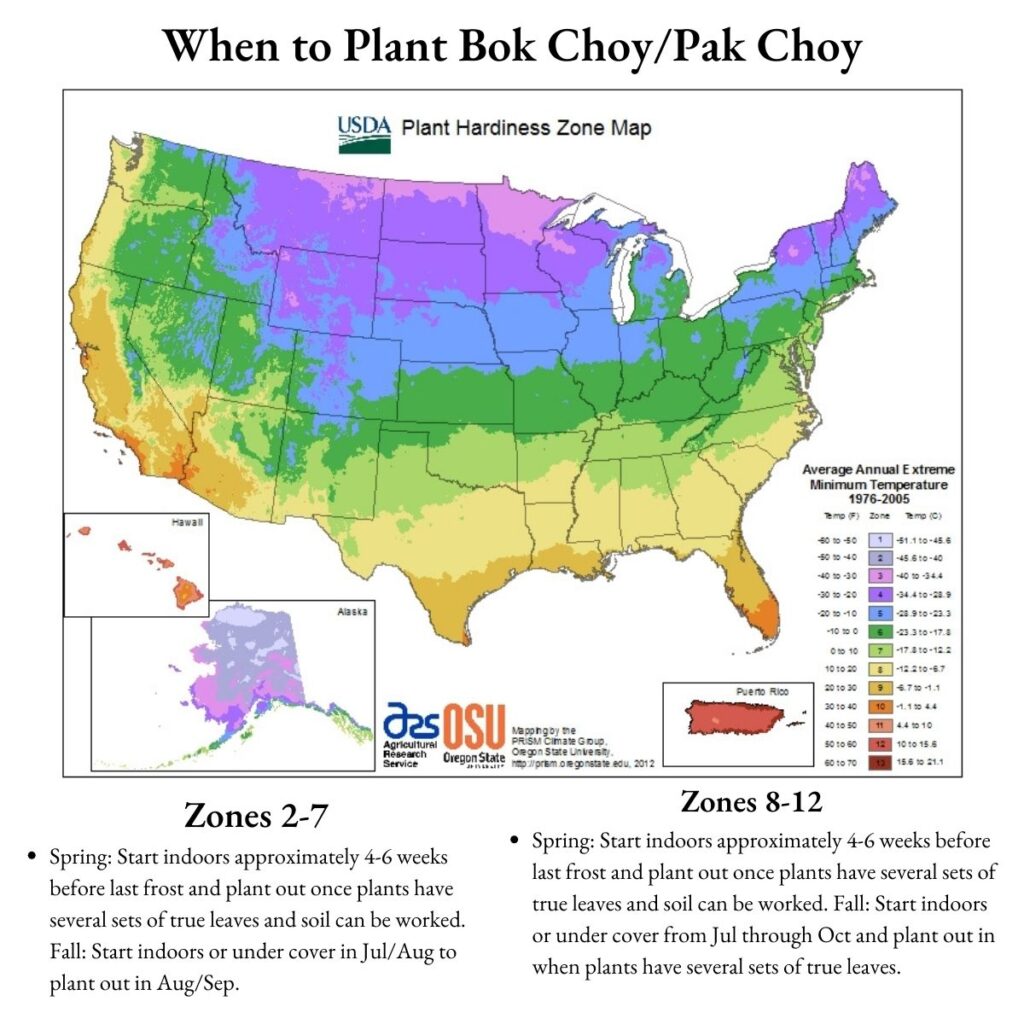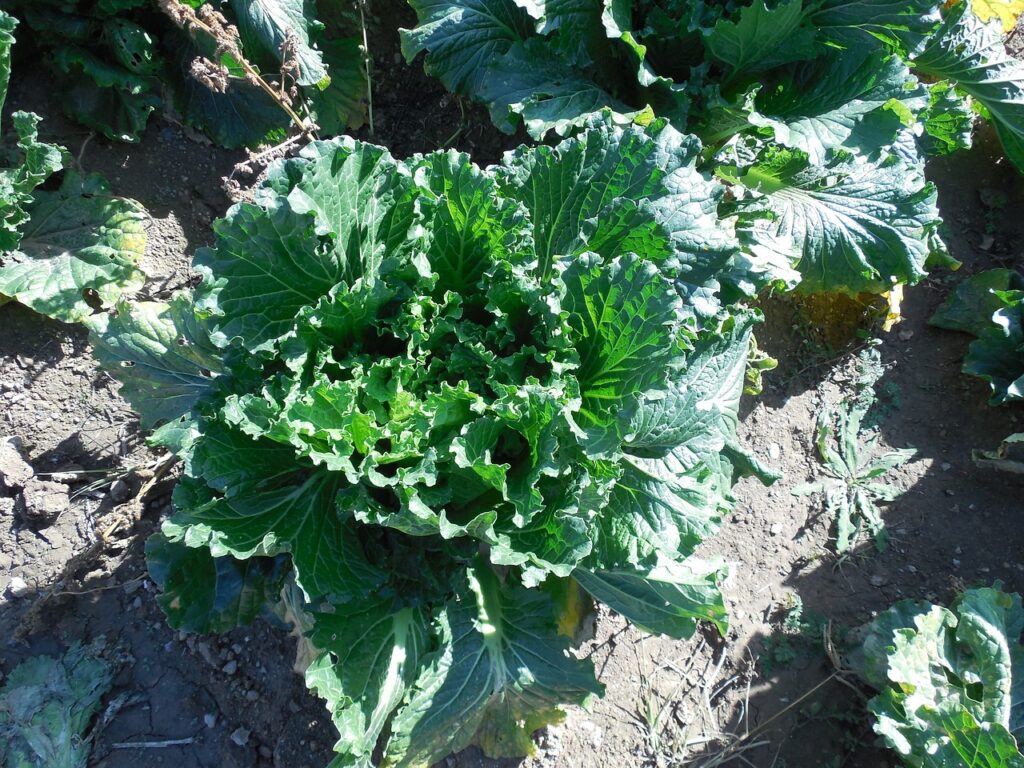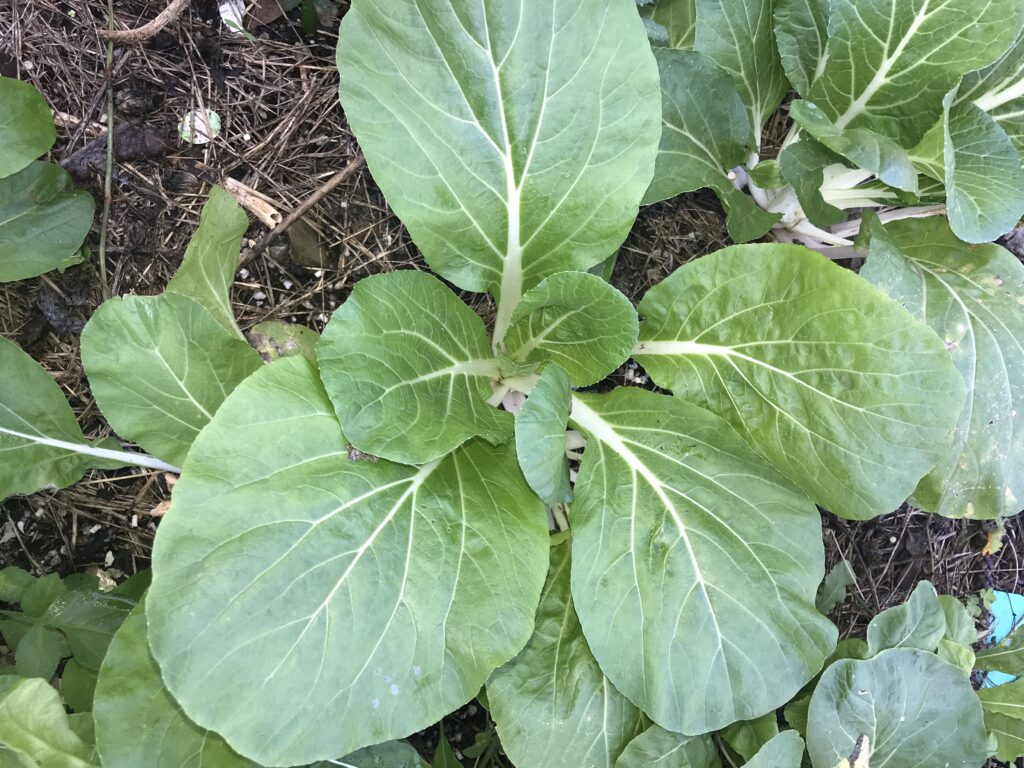Bok choy is delicious, crunchy, and packed with nutrients. Growing bok choy from seed is easy too.
Bok choy is scientifically known as Brassica rapa subsp. chinensis, and it belongs to the cabbage family. It’s a versatile and fast-growing plant that thrives in most growing zones in the U.S.
It prefers cooler weather, making it a great addition to your garden in late fall through spring.

Start Bok Choy Seeds Indoors
The most reliable way for growing bok choyis by starting seeds indoors. This allows them time to grow and develop, giving them a good head start before outdoor exposure.
- Begin by selecting a light, sterile seed starting mix. Ensure it’s well-draining and moisture-retentive.
- Sow your bok choy seeds about 1/4 inch deep in your chosen seed cell trays or soil blocks. Cover them lightly with soil.
- Gently press down on the soil to make sure the seeds have good soil contact.
- Mist or bottom-water your seeds to keep the soil consistently moist until germination occurs.
Bok choy seeds germinate best at temperatures between 50-75°F. If starting in the summer for fall planting, keep your seed trays in a cooler part of your home.
Once germination happens, move your seedlings to a well-lit spot, preferably with direct sunlight or under grow lights.
Knowing When It’s Ready to Plant
Your bok choy seedlings are ready to move to the garden when they’ve developed several sets of true leaves, usually about 4-6 weeks after planting. They should be several inches tall and well-developed.
While waiting for your plants to grow big enough to plant outdoors, begin preparing the garden bed.

Preparing the Garden Bed
Select a well-drained garden bed with plenty of organic matter. Choose a sunny location, although they can handle some shade.
Avoid planting bok choy where brassicas (cabbage, broccoli) grew the previous season to prevent soil-borne diseases.
Ensure the soil is loose and well-aerated using a garden fork or broad fork. We recommend not tilling or double-digging established beds because it damages soil structure.
Add a layer of compost or composted manure to enrich the soil.
Plan for 8-10 inches of spacing between bok choy plants to allow them room to grow.
Hardening Off Your Plants
Before transplanting, gradually acclimate your seedlings to outdoor conditions. Start by placing them outside for a few hours a day and gradually increase the time over a week or two.
Planting Bok Choy into the Garden
Dig holes in your garden bed slightly deeper than the root balls of your seedlings.
Place your seedlings 8-10 inches apart, ensuring adequate room for growth.
Apply a layer of mulch around the plants to retain soil moisture and suppress weeds. Hay or straw both work well for mulching vegetable beds.
Water plant starts in deeply and keep the soil consistently moist, especially during the early growth stages.

Caring for Bok Choy
Continue to provide consistent moisture, avoiding both drought and waterlogged conditions.
Add a slow-release fertilizer once plants are established.
Regularly remove weeds to prevent competition for nutrients.

Harvesting Bok Choy
You can start harvesting outer leaves as needed or let a large head form, typically between 12-18 inches tall, which takes approximately 45-60 days from planting out.
Cleaning and Storing Bok Choy
Rinse your harvested bok choy thoroughly and store it in a plastic bag in the refrigerator for up to a week.

Cooking with Bok Choy
Bok choy is a versatile ingredient and can be used in stir-fries, soups, salads, and more. Try dishes like Bok Choy Stir-Fry or add it to your favorite Asian-inspired recipes.
